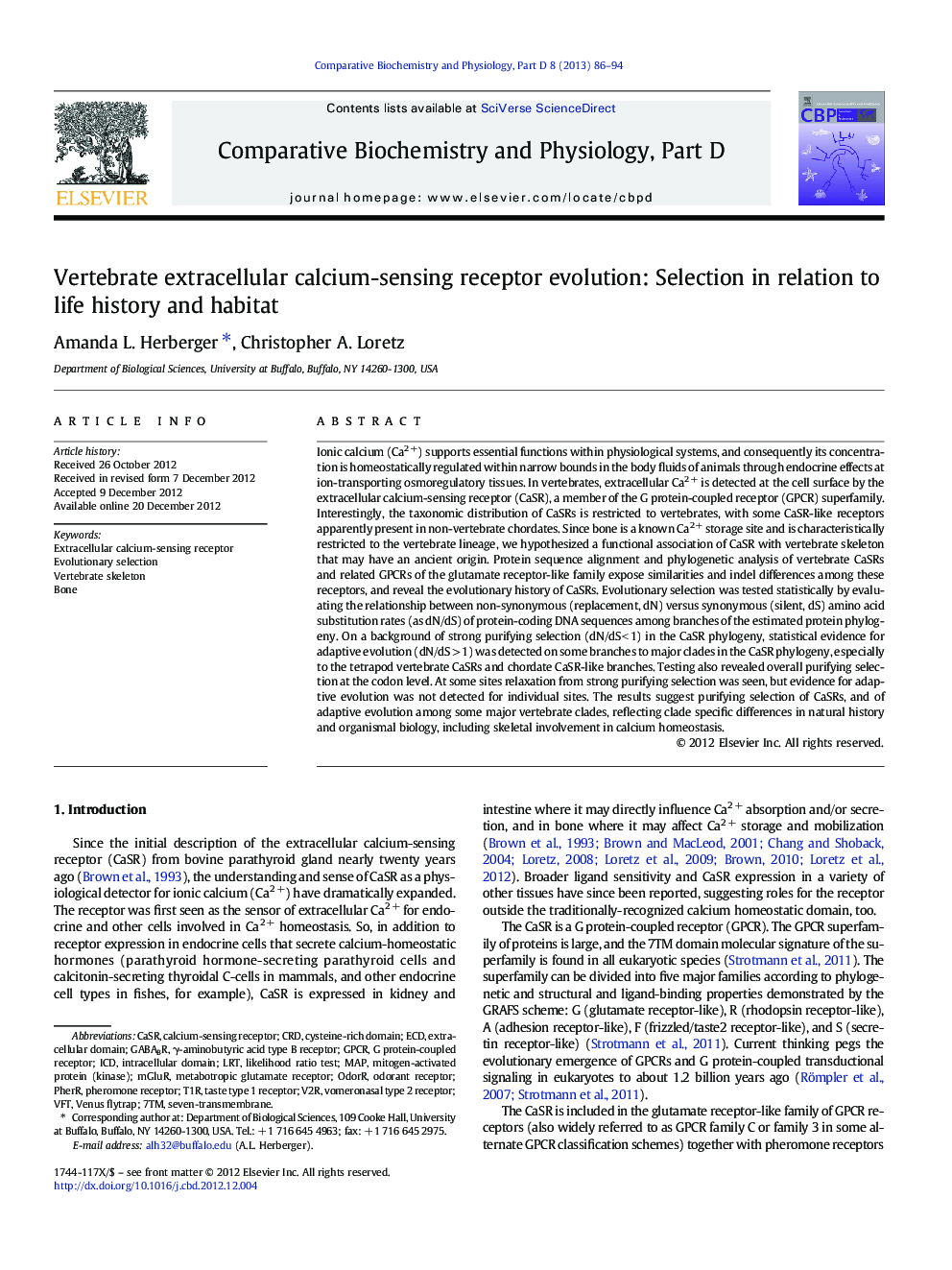| Article ID | Journal | Published Year | Pages | File Type |
|---|---|---|---|---|
| 1978702 | Comparative Biochemistry and Physiology Part D: Genomics and Proteomics | 2013 | 9 Pages |
Abstract
Ionic calcium (Ca2Â +) supports essential functions within physiological systems, and consequently its concentration is homeostatically regulated within narrow bounds in the body fluids of animals through endocrine effects at ion-transporting osmoregulatory tissues. In vertebrates, extracellular Ca2Â + is detected at the cell surface by the extracellular calcium-sensing receptor (CaSR), a member of the G protein-coupled receptor (GPCR) superfamily. Interestingly, the taxonomic distribution of CaSRs is restricted to vertebrates, with some CaSR-like receptors apparently present in non-vertebrate chordates. Since bone is a known Ca2Â + storage site and is characteristically restricted to the vertebrate lineage, we hypothesized a functional association of CaSR with vertebrate skeleton that may have an ancient origin. Protein sequence alignment and phylogenetic analysis of vertebrate CaSRs and related GPCRs of the glutamate receptor-like family expose similarities and indel differences among these receptors, and reveal the evolutionary history of CaSRs. Evolutionary selection was tested statistically by evaluating the relationship between non-synonymous (replacement, dN) versus synonymous (silent, dS) amino acid substitution rates (as dN/dS) of protein-coding DNA sequences among branches of the estimated protein phylogeny. On a background of strong purifying selection (dN/dSÂ <Â 1) in the CaSR phylogeny, statistical evidence for adaptive evolution (dN/dSÂ >Â 1) was detected on some branches to major clades in the CaSR phylogeny, especially to the tetrapod vertebrate CaSRs and chordate CaSR-like branches. Testing also revealed overall purifying selection at the codon level. At some sites relaxation from strong purifying selection was seen, but evidence for adaptive evolution was not detected for individual sites. The results suggest purifying selection of CaSRs, and of adaptive evolution among some major vertebrate clades, reflecting clade specific differences in natural history and organismal biology, including skeletal involvement in calcium homeostasis.
Keywords
V2RLRTVFTCaSR7TMT1RmGluRGPCRCRDECDLikelihood ratio testBoneextracellular domainintracellular domaincysteine-rich domainICDmapseven-transmembraneVenus flytrapGABABROdorant receptorextracellular calcium-sensing receptorCalcium-sensing receptorPheromone receptorMetabotropic glutamate receptorG protein-coupled receptor
Related Topics
Life Sciences
Biochemistry, Genetics and Molecular Biology
Biochemistry
Authors
Amanda L. Herberger, Christopher A. Loretz,
